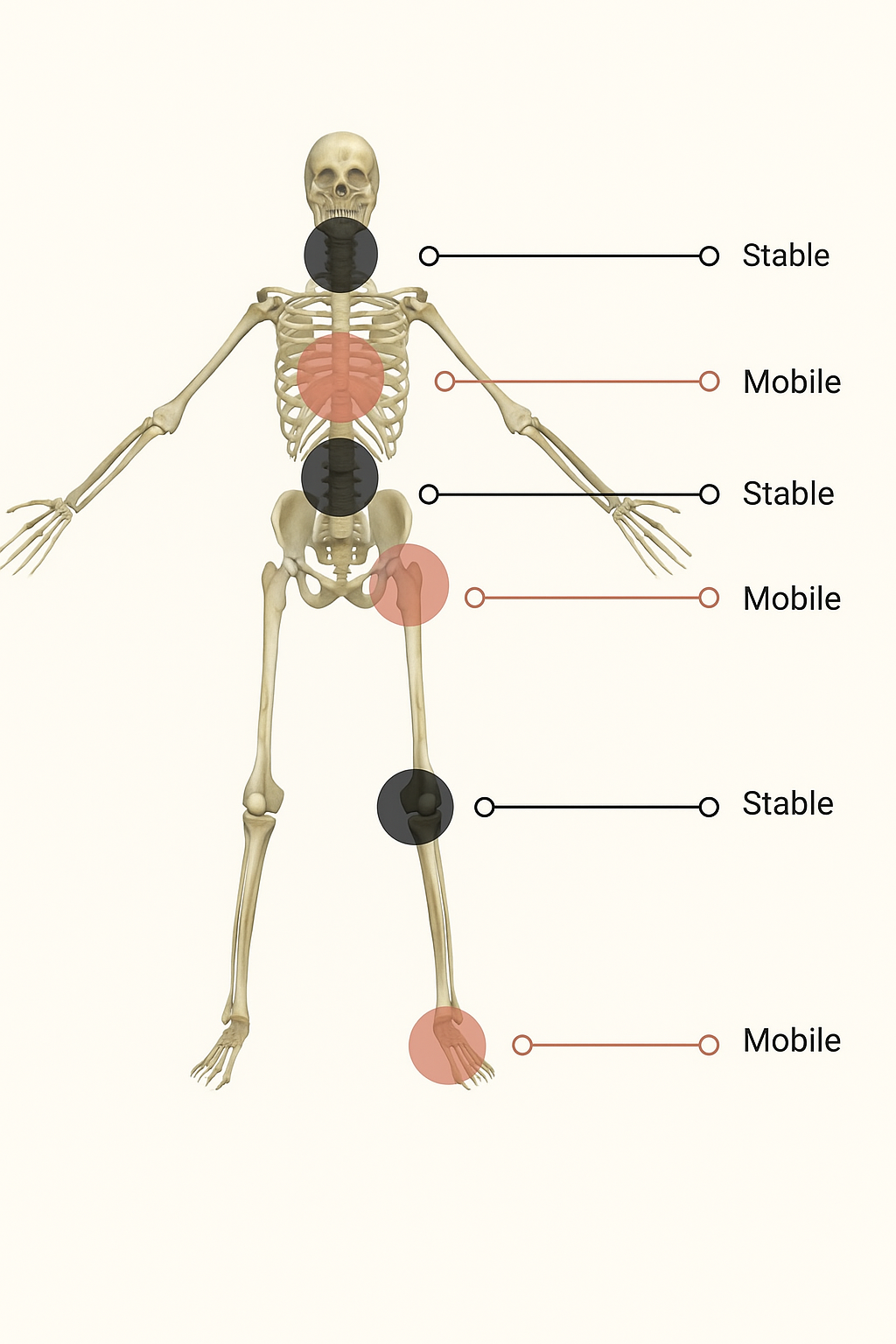Stretching, Flexibility & The Joint-By-Joint Truth About Mobility
A lot of people come to me saying, “I just want to get more flexible, I feel tight.”
It’s a fair goal, especially as we get older. But here’s the truth: flexibility alone won’t fix your mobility.
What really matters is a mix of flexibility and strength; being able to move into positions comfortably and control those positions when you’re there.
Flexibility vs Mobility: What’s the Difference?
Flexibility is how far a joint can move passively. For example, when you stretch your hamstring.
Mobility is your active control of that movement - your ability to move your body through a range of motion and stay strong and stable while doing it.
So, yes, stretching helps, but if you only work on flexibility without control or strength, you’ll struggle to move well in real life.
Think about reaching to pick something off the floor. It’s not just about “tight hamstrings.” You need:
Strong legs to bend properly,
A stable core and back to protect your spine, and
Hip and ankle mobility to move smoothly.
That combination is what keeps you mobile, not just being “loose.”
Why Stretching Alone Isn’t Enough
Long, intense stretching sessions once a week won’t change much. Your body responds better to little and often:
Short stretches (20–30 seconds) once or twice daily,
Mix static and dynamic movements,
Avoid sitting still for hours — tissues shorten when you don’t move.
The Joint-by-Joint Concept
Here’s where it gets interesting. Not every joint in your body needs more flexibility. Some need more stability.
The Joint-by-Joint Concept, developed by Gray Cook and Mike Boyle, explains this perfectly:
If one joint doesn’t do its job, the next one will try to compensate, often causing pain or stiffness.
For example, stiff hips make your lower back overwork, which can lead to back pain.
Tight ankles can cause your knees to twist or ache
So instead of thinking, “I need to stretch everything,” think: “What needs to move more, and what needs to hold better?”
.
How to Improve Mobility the Smart Way
Move daily: Even 5–10 minutes of stretching and movement can help.
Strengthen through range: Build strength in lengthened positions, that’s real mobility.
Balance mobility with control: Use activation work (glute bridges, planks, banded rows) to support the joints that need stability.
Break up sitting time: Every hour, stand, move, twist, reach. Joints love variety.
Example “mini mobility” routine (5 mins):
Ankle rocks – 30 sec each side
Hip openers (world’s greatest stretch) – 30 sec each side
Thoracic rotations – 30 sec each side
Band pull-aparts or scap control – 15 reps
Bodyweight squats or lunges – 10 reps
The Bottom Line
As you age, don’t just aim to be more flexible, aim to be strong in your flexibility.
Mobility is the marriage of movement and control. The people who move best aren’t just the most flexible — they’re the ones who are strong, stable, and capable in the positions they move through every day.
If you want to stay mobile for life, stop thinking “stretch more” and start thinking “move better.”
As an Exercise Physiologist, I help people move better by identifying which joints need mobility, which need stability, and building simple, effective routines that restore real-world strength and flexibility so you can stay active, pain-free, and confident in your body for years to come.

